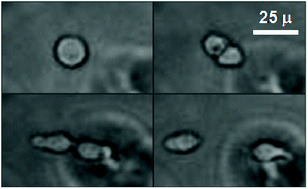A synthetic strategy for mimicking the extracellular matrix provides new insight about tumor cell migration†
Abstract
Understanding the role of the tumor microenvironment during cancer progression and metastasis is complicated by interactions between


 Please wait while we load your content...
Please wait while we load your content...